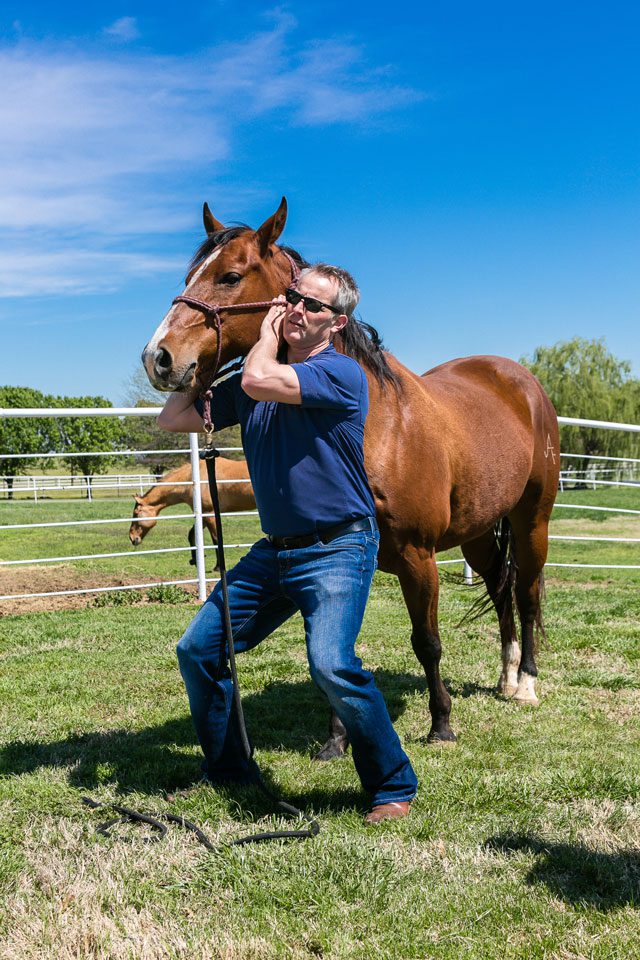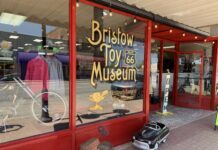
[dropcap]Chiropractor[/dropcap] Chuck Zoellner has expanded his practice to include our favorite four-legged friends.
“If it’s on Old McDonald’s farm, I can probably adjust it,” he says.
Zoellner has worked on dogs, cats and cows, but it was his daughters’ love of horses that drew him to the specialty.
“We already rode horses as a family every weekend at my brother’s ranch, and my daughters also took horseback riding lessons and loved being around these gentle giants,” he says. “But it was when we were watching equestrian at the Summer Olympics on TV and my youngest daughter asked me in a 9-year-old voice: ‘Dad, those horses are so beautiful, but I want to barrel race instead of jump. Do you think I can ever be the best barrel racer?’ When she asked me that, I knew I had to broaden my training to involve animals.”
Zoellner treats hip, leg, neck and back issues for family pets and working animals.
“I am slowly letting the word out with my human patients that I can adjust animals, but, even with a slow approach, it is steadily picking up,” he says. “I have a wide variety of clients, ranging from ranchers to CEOs to competitive athletes who need help treating their furry family members.”
Zoellner says the practice is similar to his work with human patients.
“When an animal is out of alignment, just like a person, they can be agitated, grumpy, lethargic or show other symptoms of being sick,” he says. “Sometimes horses and dogs just won’t move because they are hurting, or they may act out – again, just like a person – and grunt, kick their feet, cry, nip or just push you away. When I encounter this, I have to reassure the patient that I am there to help and not hurt.”
Because he has to earn the animal’s trust, Zoellner says he can’t put time limits on his appointments with a quadriped.
“Animals are not like people in the fact that you can’t always control them or tell them sentences and assume they understand to calm down or tell you what hurts,” he says. “You really have to gain the animal’s trust simply because they are in pain and can’t communicate through words. Touch, demeanor and approach are important with animals.”
The nonverbal communication can make monitoring improvement simpler, however.
“What is great about animals is their motion doesn’t lie,” he says. “I examine before and after and, if I can fix them, it is noticeable. Sometimes it is difficult for people to remember how far they have progressed, whereas with an animal it is apparent right away.”
Zoellner says he likes that animal chiropractic allows him to take his practice outside, where he can enjoy nature while working.
“I also feel that it helps me create a great bond with my daughters,” he says. “It makes me feel amazing when my daughter says she wants to be a chiropractor or a veterinarian and take over the family business someday.”


























